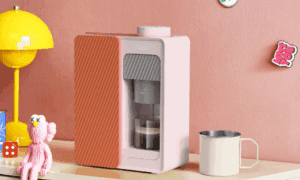Introduction
When it comes to skincare, consistency is key—but the products you use at home can only go so far. Incorporating professional facials into your long-term skincare routine creates a powerful synergy that elevates results and improves the overall health of your skin. But to get the most out of it, you need more than just a good cleanser or moisturizer—you need a plan.
Understanding how your daily, weekly, and monthly habits interact with in-studio treatments is crucial. Whether you’re a teenager just starting your skincare journey or someone interested in the benefits of an anti-age facial, a personalized approach can yield long-term benefits.
Glow Up Studio works with clients across all ages and skin types to help them build effective, maintainable skincare routines. Here’s how to align your at-home habits with regular facials for better results and a healthier, more radiant complexion.
Know Your Skin Type First
Why It Matters
Before you build any kind of skincare routine, you need to know your skin type. Dry, oily, combination, sensitive, and acne-prone skin all require different products and different facial protocols. Using the wrong ingredients—even those marketed as “universal”—can disrupt your skin barrier or trigger reactions.
Identifying your skin type will also help your esthetician recommend the right facial frequency and treatment style, whether it’s a teen facial for balancing oil production or a deeply hydrating facial for mature, dry skin.
How to Identify Your Skin Type
You can get a general sense of your skin type by evaluating how your face feels a few hours after cleansing:
- Oily skin will feel slick or shiny, particularly in the T-zone.
- Dry skin will feel tight or flaky.
- Combination skin will have both dry and oily areas.
- Sensitive skin may appear red or feel irritated easily.
- Acne-prone skin shows frequent congestion, breakouts, or inflammation.
An in-person skin analysis during a facial is the most accurate way to determine skin type and create a plan around it.
The Core of a Daily Routine
Cleanse, Moisturize, Protect
These are the three non-negotiables of a solid skincare foundation:
- Cleanser: Choose a gentle, sulfate-free cleanser that suits your skin type.
- Moisturizer: Even oily or acne-prone skin needs hydration. Use lightweight formulas if you’re prone to breakouts.
- SPF: Sun protection is critical. A broad-spectrum SPF 30 or higher should be applied every morning, even on cloudy days.
These steps maintain skin balance and protect against external damage, allowing the results of your facials to last longer.
Avoid Overuse of Actives
One of the biggest mistakes people make is using too many active ingredients—retinol, exfoliants, acids—without professional guidance. These can work wonders when used correctly but may counteract the benefits of your facials if overused or poorly timed.
Always communicate with your esthetician about your home routine so treatments can be adjusted accordingly.
How Facials Fit Into the Bigger Picture
Monthly Treatments as the Gold Standard
Most professionals recommend scheduling a facial every four to six weeks. This aligns with your skin’s natural cell turnover cycle and allows for consistent care that evolves with the seasons or changes in your skin condition.
Monthly visits allow estheticians to:
- Perform deep cleansing and extractions
- Apply targeted treatments (hydrating masks, enzymes, peels)
- Monitor skin changes and adjust your routine accordingly
This regularity is especially beneficial for clients managing acne, hyperpigmentation, or early signs of aging.
Seasonal Adjustments
Your skincare needs shift throughout the year. In colder months, the focus may shift to hydration and barrier repair. During summer, oil control and sun protection take center stage. Your facial protocol should evolve with these seasonal changes to keep your skin balanced.
Talk to your provider about incorporating seasonal add-ons, like cooling treatments for summer or rich masks in the winter.
Special Considerations by Age
Teens: Start with the Basics
A teen facial focuses on cleansing, calming inflammation, and introducing good skincare habits. The goal is not to over-correct or over-treat but to support a developing skincare routine.
At home, teens should focus on:
- A gentle foaming cleanser
- Lightweight, oil-free moisturizer
- Spot treatments as needed
Consistency matters more than trend-driven products. Teenagers should be encouraged to avoid over-cleansing or over-exfoliating, which can worsen acne and dryness.
20s and 30s: Early Prevention
This is the time to start integrating preventive treatments into both facials and daily care. Antioxidants, vitamin C serums, and light exfoliants are useful in this stage. An anti-age facial may be introduced gradually to support collagen production and increase skin vitality.
Include these in your home routine:
- Hydrating serums
- Night creams or lightweight retinols (as tolerated)
- Sunscreen every morning, even when indoors
Your 20s and 30s are also the best time to build a long-term partnership with a skincare provider who can help track your skin’s progression.
40s and Beyond: Restoration and Maintenance
In this phase, facials may become more advanced, including options like microcurrent stimulation, enzyme peels, or LED therapy to improve elasticity, texture, and tone.
At home, the focus should shift to:
- Richer moisturizers
- Active serums with peptides or ceramides
- Gentle exfoliation 1–2 times per week
Work with your provider to build a facial schedule that supports ongoing hydration, collagen production, and surface renewal.
When to Adjust Your Routine
Lifestyle Changes
Your skin reflects your lifestyle. Stress, sleep quality, diet, medications, and hormonal changes can all influence how your skin behaves. If you notice sudden shifts—acne, dullness, redness—it may be time to revisit both your facials and your home products.
A routine that worked six months ago might not be ideal now. Stay flexible and don’t hesitate to seek professional advice.
Post-Facial Recovery
After a facial, your skin might need a break from actives for a day or two. Most estheticians will provide post-treatment care tips, including:
- Avoiding exfoliation or retinol for 48–72 hours
- Staying out of direct sun
- Using extra hydration
Following this advice helps extend the benefits of your facial and reduces the risk of irritation.
Final Thoughts
Facials are more than just a luxury—they’re a key part of a long-term skincare routine. When combined with thoughtful home care, they enhance your skin’s natural function and deliver visible, lasting results. But the key to maximizing those results lies in consistency and customization.
By aligning your daily habits with regular treatments—be it a monthly anti-age facial or a quarterly teen facial—you set your skin up for long-term success. Think of your esthetician as your skin’s personal trainer: they can guide you, challenge your routine when necessary, and help you achieve your goals.
Glow Up Studio encourages every client to view skincare as a lifestyle, not a checklist. With personalized facials and daily care working in harmony, your best skin isn’t just possible—it’s sustainable.
Read More From Techbullion



































